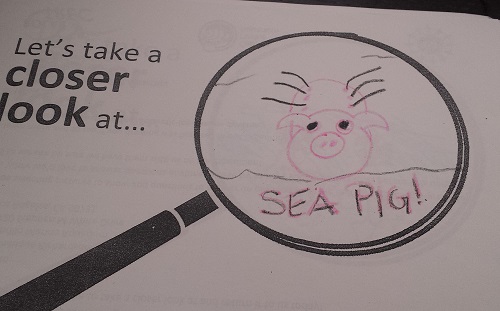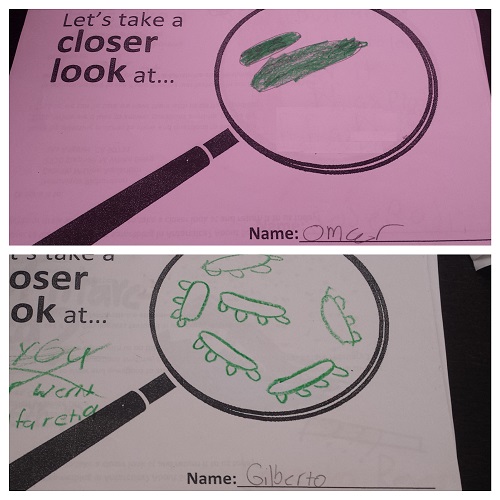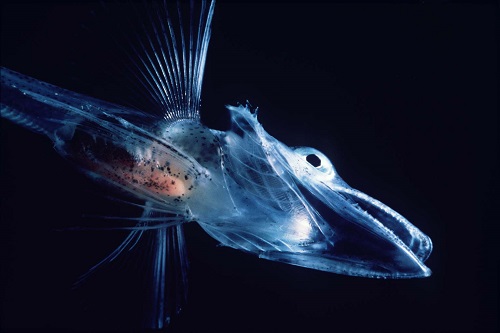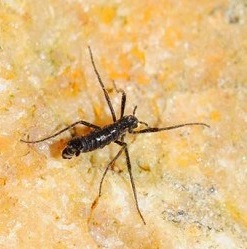Due to the nature of our research expedition, there are a lot of animals living here we didn’t and won’t get a chance to see—like the stuff that lives on the ocean floor or deep under the ice. However, I still received questions about some of these animals that I wanted to answer because the organisms are so cool.
- How many types of animals are there in Antarctica? – Kimberly J. Despite the harsh conditions, Antarctica has quite a bit of biodiversity (types of living things). While there are very, very few land animals, there’s a plethora of marine invertebrates (over 4100 recorded species so far), a good number—at least 17 species—of marine mammals (like seals and whales and lots of birds (like penguins and terns. There’s also about 1150 species of fungus, a handful of plants and a wide variety of microbes too, including some that live inside rock.
Invertebrates

Invertebrates are animals without backbones and include things like sea
jellies, sea urchins, crabs, spiders, worms, insects, and sponges. There
is a huge diversity of marine invertebrates in Antarctic waters: from
sponges to worms to echinoderms to arthropods to mollusks to bryozoans.
Marine Ecologist and Technician on the NBP, David
Branson
explains that there are currently over 4,100 recorded species of marine
benthic (bottom dwelling) invertebrates but it’s estimated that there
could be more than 17,000 species out there.

This amount of diversity in the Southern Ocean rivals that of Hawaiian waters. It might seem unexpected that there are so many different types of animals in such a cold area. However, as David describes, the Antarctic continental shelf has been effectively isolated from surrounding oceans for about the past 31 million years by the Antarctic CircumpolarLocated or found within the Earth’s polar regions. Current and by the Antarctic Polar Front. These current and temperature barriers prevent species from both leaving and coming into the area, leading to a high level of endemic (native to an area and not found anywhere else) species in the ocean around Antarctica.


Microorganisms

There are many different types of exciting microorganisms in Antarctica. In fact, there are many, many, many different types of bacteria and microbes period. Some that are good for us and keep us healthy, some that make us sick, and many that we don’t even know about yet. The majority of them are too small for us to see without the help of microscopes.
Cyanobacteria are prokaryotic oxygenic phototrophs; this means they are simple single celled organisms that use sunlight to make their own food, producing oxygen along the way. They can survive in all sorts of extreme conditions. The first photosynthetic organisms to evolve, they survived the harsh conditions of ancient earth and critical for the evolution of life, producing oxygen in an anoxic environment that lead to the evolution of all sorts of other interesting creatures. Now they can be found in all different places on earth. Here in Antarctica they’re often found in big microbial mats which composed of many different types of aquatic micro-organisms.
Archaea are another interesting group of microorganisms. While sometimes call Archaeabacteria, they are actually unique from bacteria and are a type of single celled organism that make up their own domain or kingdom. Many archaea are extremophiles, meaning they can survive in extreme environments, like extreme heat, extreme cold (some live deep under the ice is subglacial pools), extreme salt or even in rock. Archaea that live in rock are called autolithotropes meaning they breakdown rock to produce their own energy. These types of archaea are generally very, very slow growing and we have not been able to figure out how to use them for energy yet. However, some scientists are studying microorganisms to learn more about our planet as well as use their amazing abilities to help people.
Check out fellow PolarTREC teacher Lucy Coleman, who helped with a study on a certain microorganisms in the Antarctic Dry Valleys.
Fish

Antarctica is home to some very unique animals, like the antifreeze
fish. Because it is so cold some animals that live here—including
several fish, invertebrates and microorganisms—have special proteins,
called AFPs (antiefreeze protiens) or ISPs (ice structuring proteins)
which inhibit growth or recrystallization of ice crystals in their
bodies. This “antifreeze” is different from the antifreeze in cars,
which works by lowering the freezing point of liquids in your engine,
and is produced naturally in the organisms’ bodies.
Learn more about the antifreeze
fish.

Another type of unique fish found in Antarctica are ice fish (Channichthyidae), which have white blood. Our blood is red because it contains hemoglobin—a protein which helps carry oxygen to our cells. However, cold Antarctic waters are so rich with oxygen the gas can just diffuse through the fish’s cells. Because they have no need for the oxygen carrying proteins in the blood, the fish have come to lack hemoglobin leaving them with white blood. Learn more about ice fish with white blood.
Biggest Animal in Antarctica

There are a couple different animals that could hold this title. If we consider Antarctica to include the ocean around Antarctica too, then the largest animal in Antarctica is also the largest animal on earth: the blue whale. Blue whales can be over 100 feet long and over 170 tonnes. They feed on krill in the oceans around Antarctica.
However, if you consider the largest animal to be one that has to spend at least some time on the land of Antarctica, that could go to the emperor penguins, who winter over on the continent. Emperor penguins can be over 3 ½ feet tall and weigh up to 99 pounds. However, they do have to return to the ocean to feed and do not live their whole life on Antarctica.
The largest animal, that spends its entire life on the continent of
Antarctica is actually a bug, Belgica antarctica. It is a wingless
midge, the only true insect found on mainland Antarctica and at a
maximum of ¼ inch long, it’s the biggest terrestrial animal on
Antarctica!



Comments